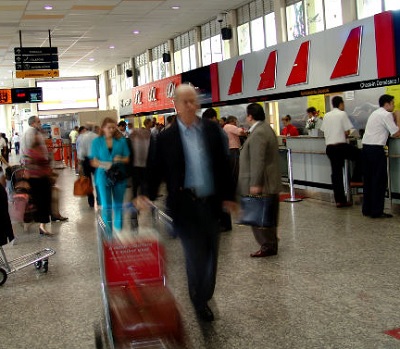Developers invest significant time and resources into creating apps that are highly functional and appealing to users. But marketing is the missing link between your product and the world at large. Without the best app marketing strategy in your corner, your app risks falling by the wayside in increasingly crowded mobile app marketplaces. After all, there are millions of apps vying for mobile users’ attention these days.
Driving installs—and, more importantly, meaningful engagement—is a matter of connecting with the right users at the right time in the right ways. Here are a few app marketing strategies to consider before launching your app.
QR Codes
At their best, Quick Response (QR) codes “ideally act as shortcuts for getting valuable information into the hands of your customers and prospects.” However, it’s important to make sure your usage of QR codes actually simplifies the user’s journey by taking them to a relevant place within your app. In mobile app marketing, QR codes often transport mobile device users to an install screen.
Many marketers feel QR codes have already experienced their rise and fall in prominence. It is worth noting Apple began building in the QR code scanner as a native component of the Camera application, making it more intuitive for iOS users to scan them. Even so, QR codes are far from the most cutting-edge approach to mobile app marketing available today.
Cost-Per-Install (CPI) Campaign
Put simply, running a Cost-Per-Install (CPI) paid mobile app marketing campaign means you will pay each time someone taps your ad and subsequently installs your app. The primary advantage of this approach is that it’s easy to track—each install results in X amount of additional ad spend. If the acquisition cost is less than the projected lifetime value of an app user under a CPI model, it makes at least some financial sense to pursue this method.
In one survey, over half of app developers (52 percent) chose CPI as their preferred user acquisition model. Unfortunately, data actually shows that many of the users acquired via CPI are “astonishingly low value.” This is because mobile users tend to install apps and use them a handful of times—or none at all. This is especially true in our current marketplace in which many apps use a “freemium” pricing model which encourages users to download apps because there’s no risk.
So, what’s a better alternative?
Cost-Per-Action (CPA) Campaign
Mobile analytics companies offering CPA acquisition focus more on post-install engagement than installs themselves. To start, this strategy promotes targeting mobile users most likely to engage based on the fact they share characteristics with already active app users. Showing these promising users dynamic advertisements personalized to their demographics, OS and more aims to drive meaningful installs.
But most importantly, marketers pay only when these users engage in desirable actions like creating an account or making an in-app purchase. Unlike CPI, this means you will not end up paying for people to install your app initially and forget about it before further engaging. This tends to boost the lifetime value of your users, which is an important metric in monetizing a modern app.
App Store Optimization
App Store Optimization (ASO) is a marketing strategy so simple it’s actually easy to overlook. In a world where 63 percent of mobile users discover new apps via “general browsing in an app store,” it’s important to make sure your app is findable and appealing at first sight.
Here are the basics of ASO:
- Title: Should be readable and contain the highest-trafficked keyword related to your app.
- Description: Should be clear, laying out what value your app provides to users.
- Icon: Should convey recognizable branding at first glance.
- Screenshots: Should display your app’s most important features and functionalities.
A combination of the best app marketing strategies, like CPA user acquisition plus ASO, will help you monetize your app through meaningful engagement.

 In Atlanta, about 65 percent said that they would use their
In Atlanta, about 65 percent said that they would use their 